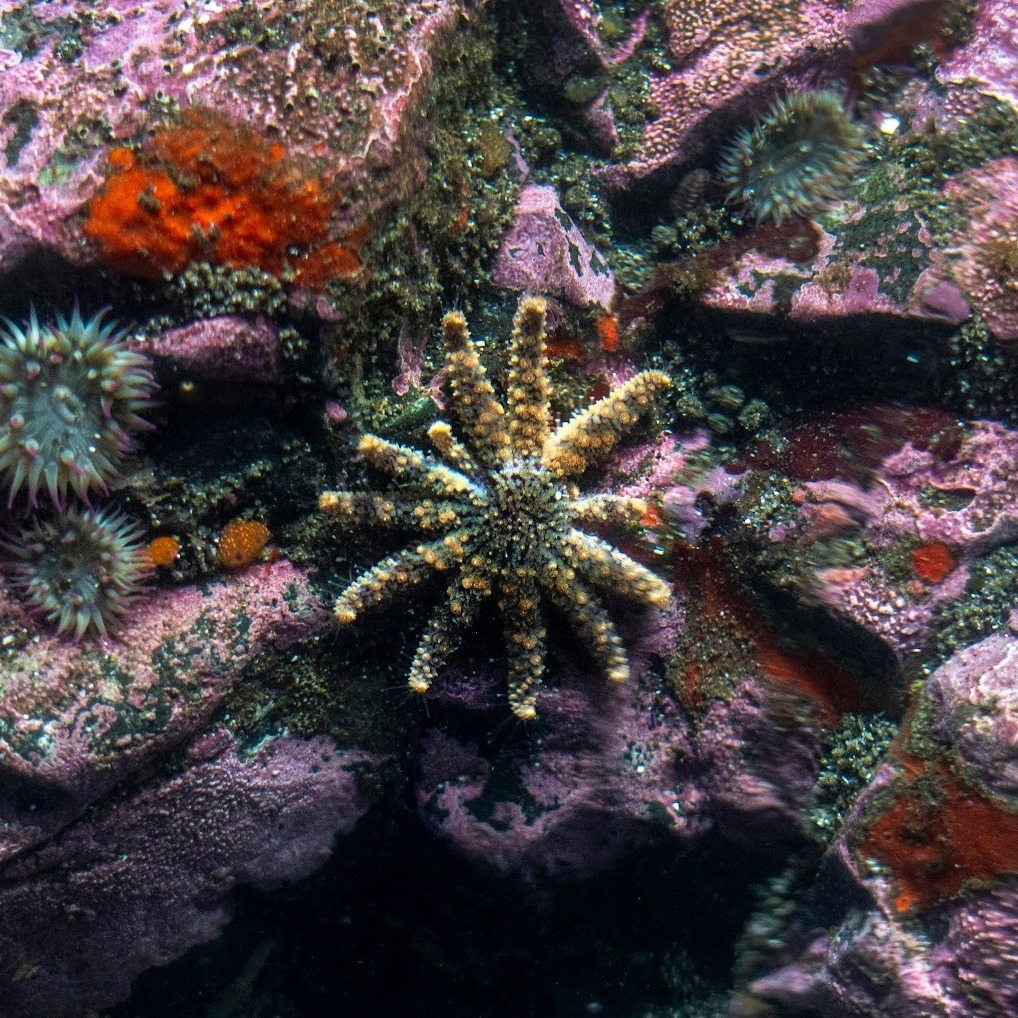- Introduction to the Sunflower Sea Star
- Sunflower Sea Star Wasting Disease (SSWD)
- Recovery Efforts by Researchers
- The Importance of Biodiversity and Marine Ecosystem Health
- Citizen Science and Public Engagement
The sunflower sea star, an impressive marine species, captivates with its vibrant colors and numerous rays. These sea stars, with up to 24 arms, are among the largest sea stars in the world. Their presence is a vivid indicator of healthy coastal ecosystems, making them a critical focus for marine conservation efforts.
In recent years, sunflower sea star populations have faced severe declines due to Sea Star Wasting Disease (SSWD). This devastating condition causes lesions, tissue decay, and ultimately, disintegration of the sea stars’ bodies. Its rapid spread has resulted in drastic population decreases along the Pacific coast, from Alaska to Mexico. Researchers attribute this phenomenon to environmental stressors and pathogens, prompting extensive scientific investigation.
Efforts to combat SSWD are multifaceted. Marine biologists and environmental scientists collaborate to understand the etiological factors, study the disease’s progression, and develop potential remedies. Experimental treatments are being tested in controlled environments, offering hope for future wild population recovery. These research initiatives also emphasize the role of genetic diversity in resilience, aiming to foster robust sea star communities that are less susceptible to disease.
Understanding the broader implications of this crisis is essential. Sunflower sea stars play a significant role in maintaining marine biodiversity. By preying on sea urchins, they regulate populations that, if unchecked, can devastate kelp forests. Kelp forests, in turn, provide habitat and food for numerous marine species, supporting complex food webs. Thus, the decline of sunflower sea stars could trigger cascading effects, undermining the stability of entire coastal ecosystems.
Engaging the public through citizen science has become a vital strategy in conservation. Bioblitz events, like the one with the Noyo Center, allow volunteers to collect and monitor data. Such activities augment research efforts and raise awareness about marine conservation issues. Participants gain firsthand experience in scientific observation, fostering a deeper appreciation for marine life and the importance of biodiversity.
Incorporating educational outreach into conservation strategies is equally important. Public education campaigns focus on the ecological roles of sunflower sea stars and the threats they face. Interactive exhibits in aquariums and coastal museums provide accessible learning opportunities, highlighting the intricate interdependence of marine species and their habitats.
The sunflower sea star exemplifies the intricate connections within marine ecosystems and the urgent need for conservation action. As researchers and citizen scientists unite to understand and combat SSWD, their work underscores the broader imperative of preserving biodiversity. Each sighting of a sunflower sea star in the wild reaffirms nature’s resilience and the collective power of dedicated stewardship efforts.
Effective conservation hinges on continued research, public participation, and a commitment to safeguarding marine environments. By highlighting the plight of the sunflower sea star and supporting ongoing recovery initiatives, we contribute to the broader goal of sustaining healthy, vibrant ocean ecosystems for future generations.
*****
Source Description
We heard it’s With its many rays and bright colors, we’re excited to celebrate one of the coast’s most radiant residents: the sunflower [sea star]. Researchers statewide are working to help sunflower sea star populations rebound from sea star wasting disease, which made us all the more excited to spot one in the wild during a recent bioblitz with our partners @noyocenter.

